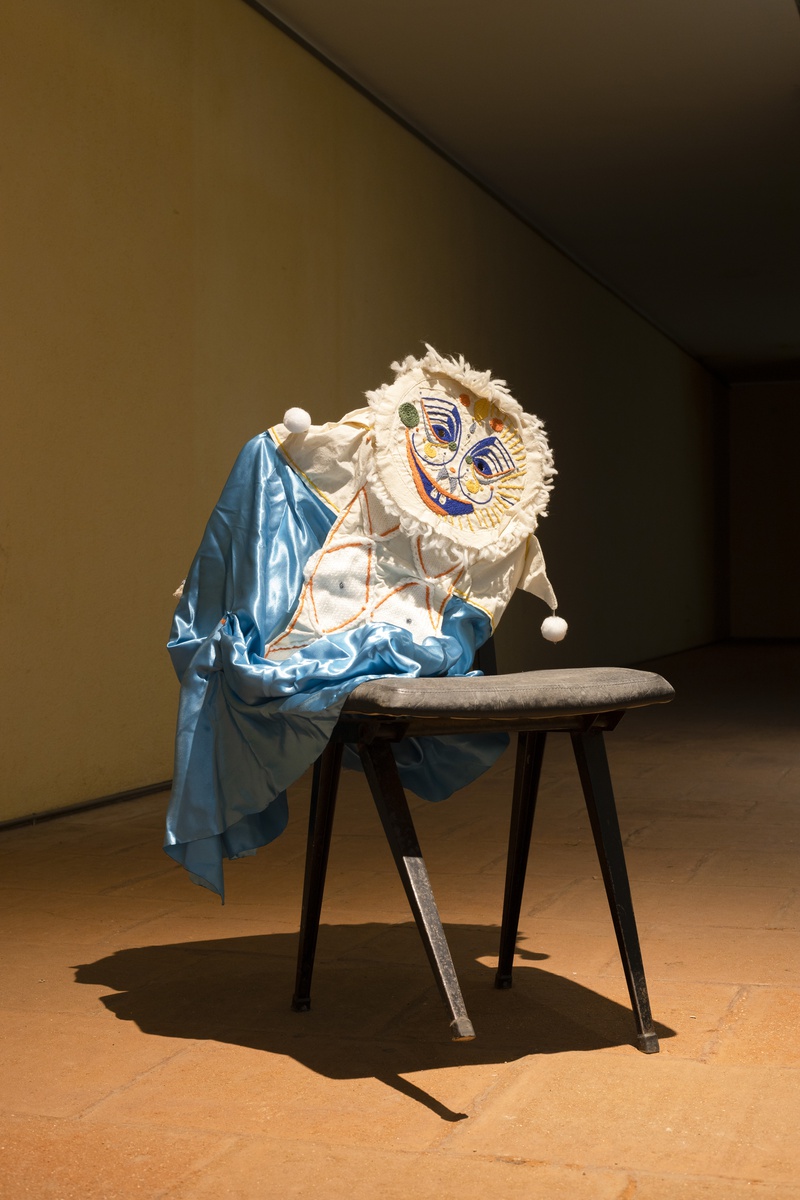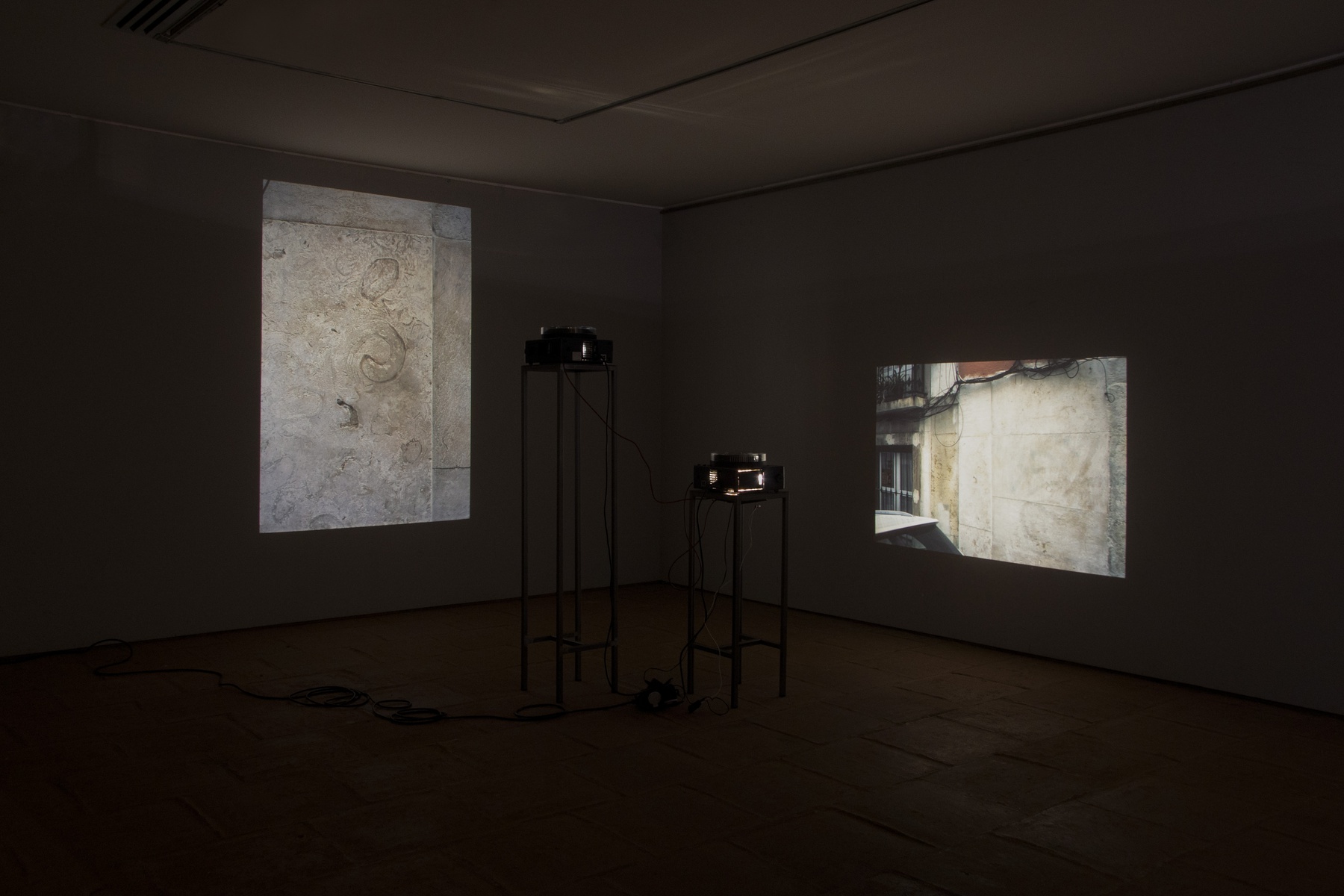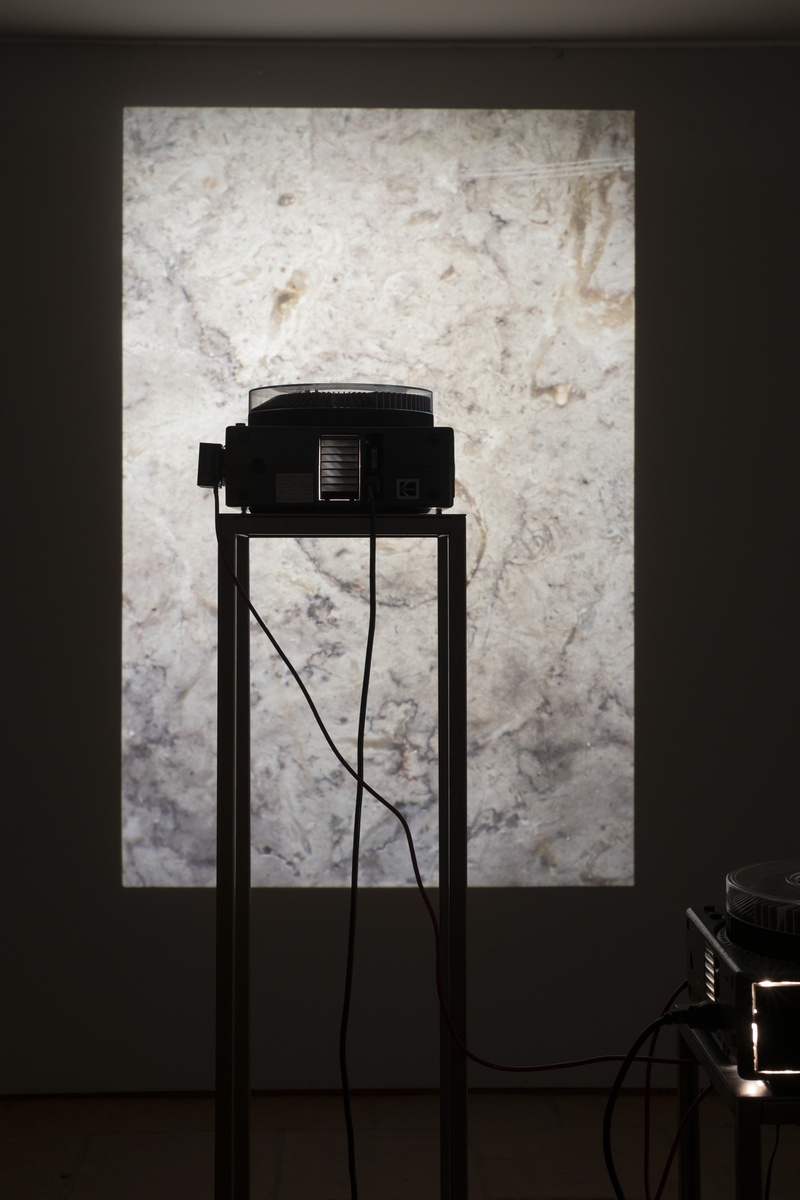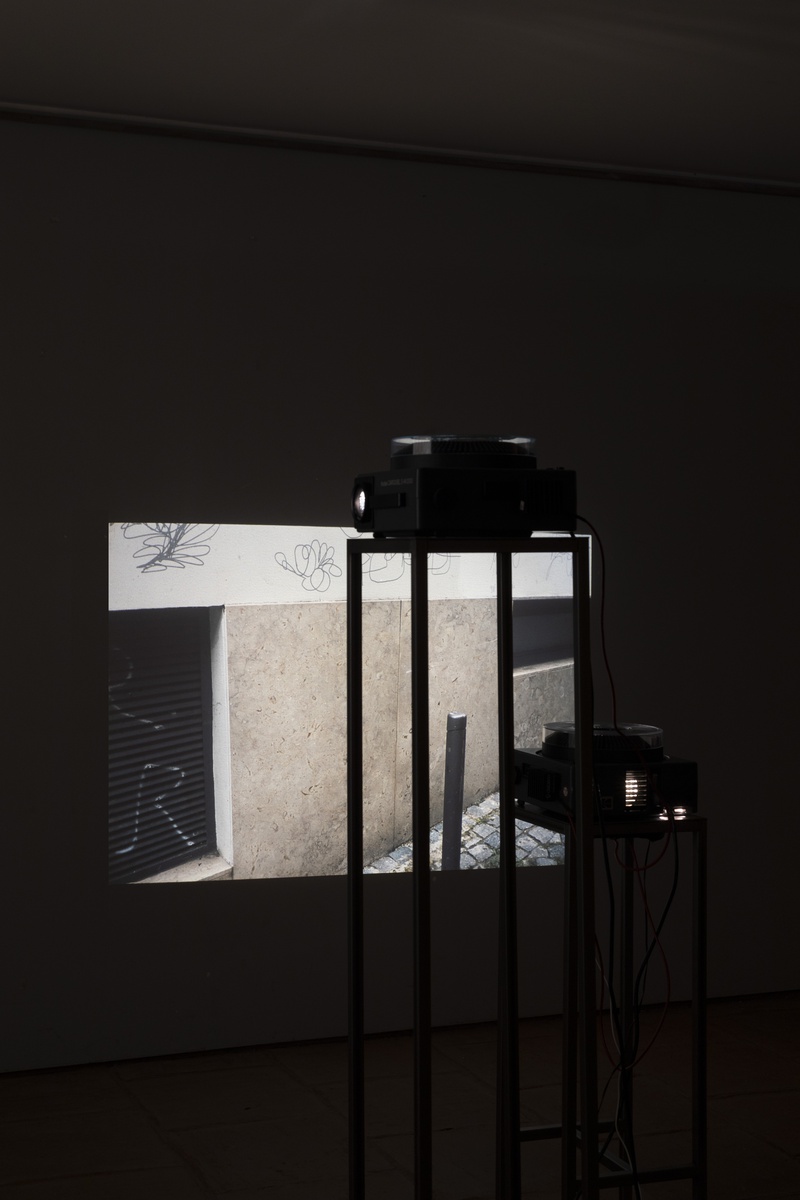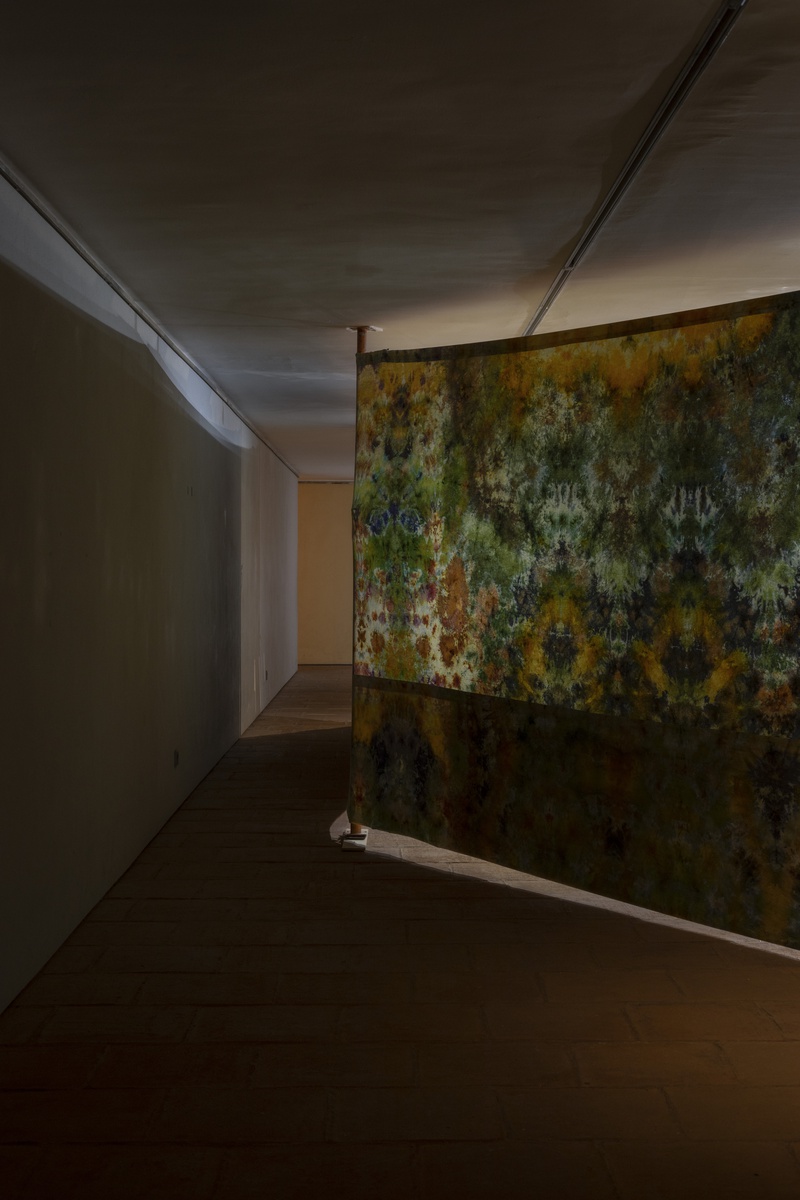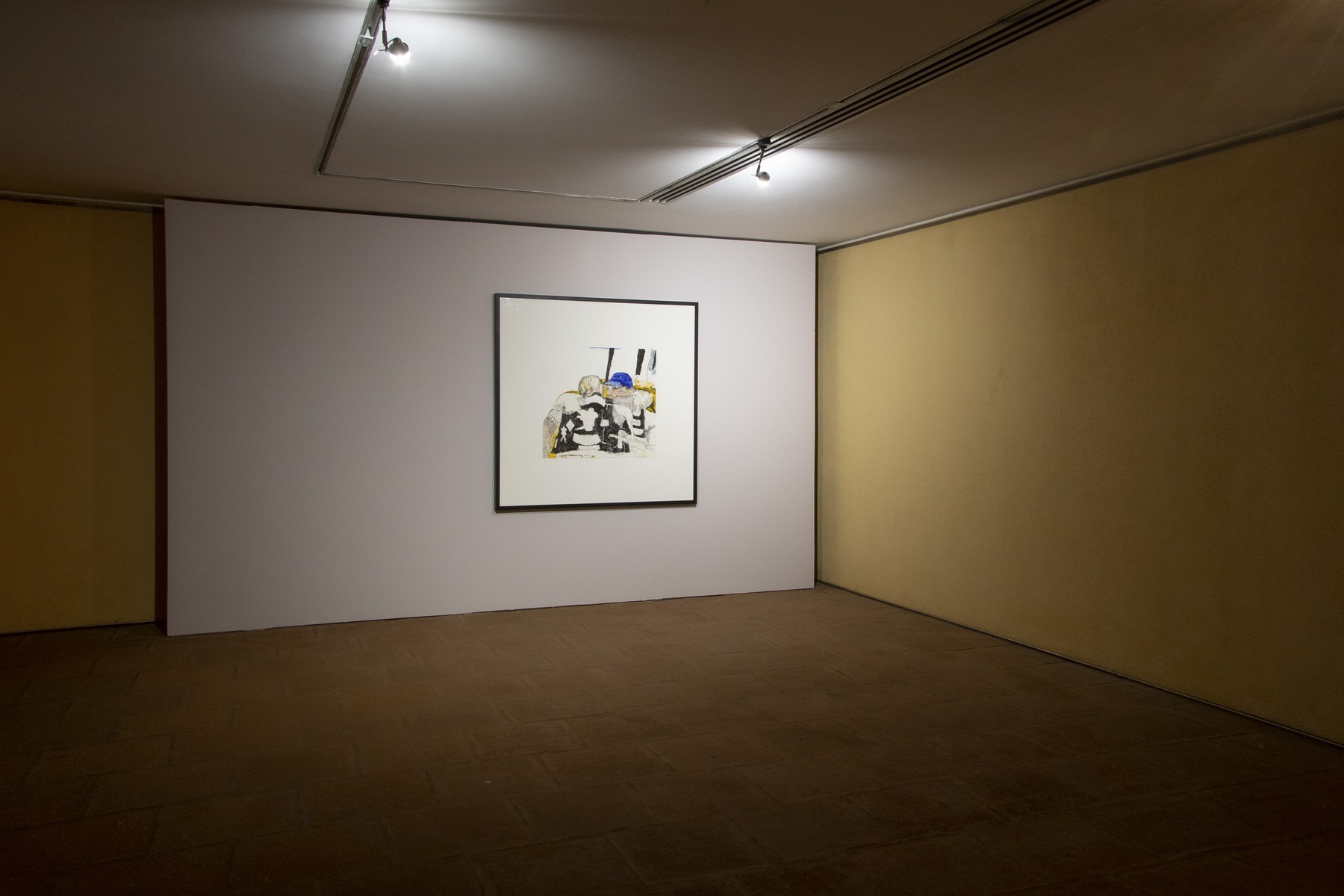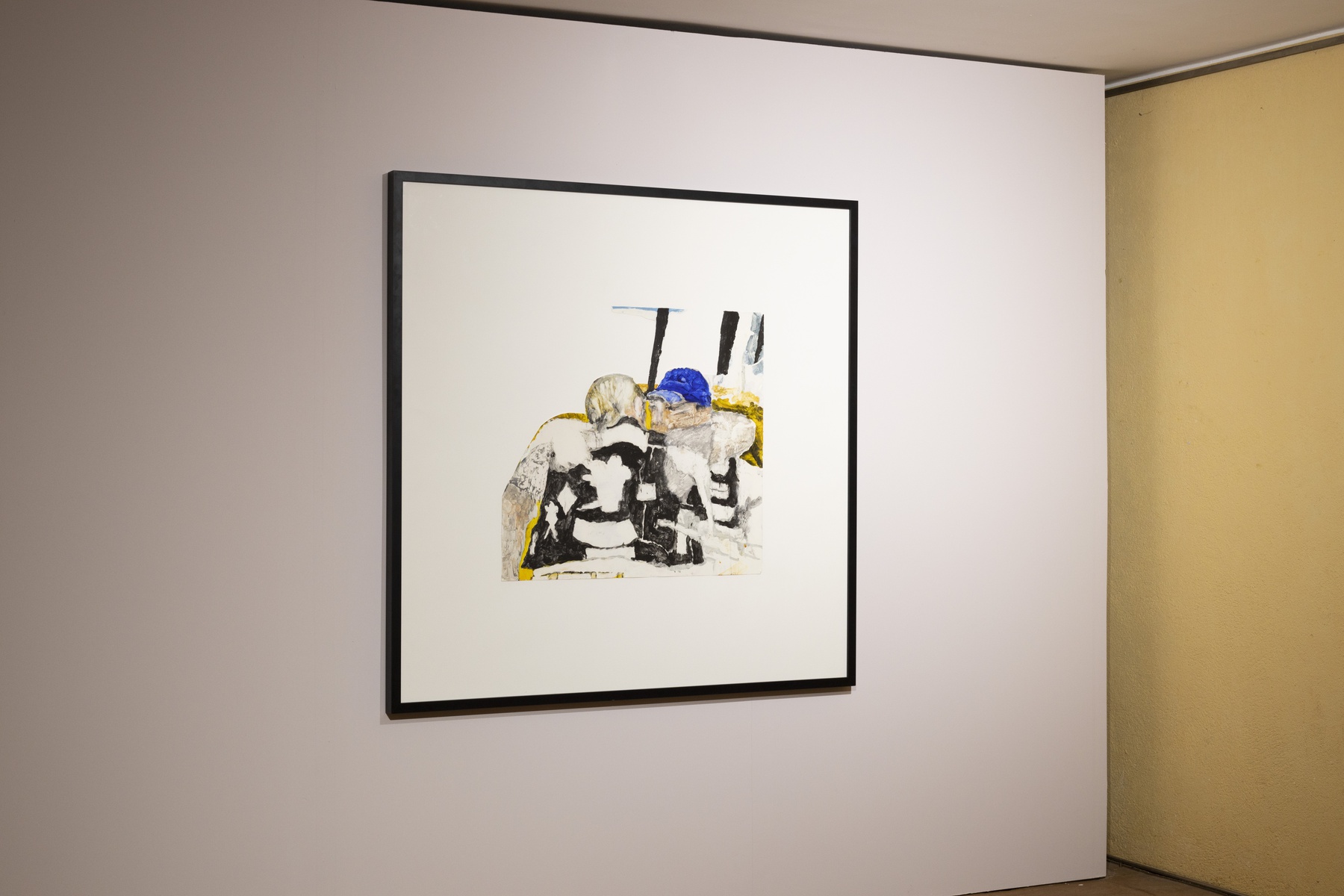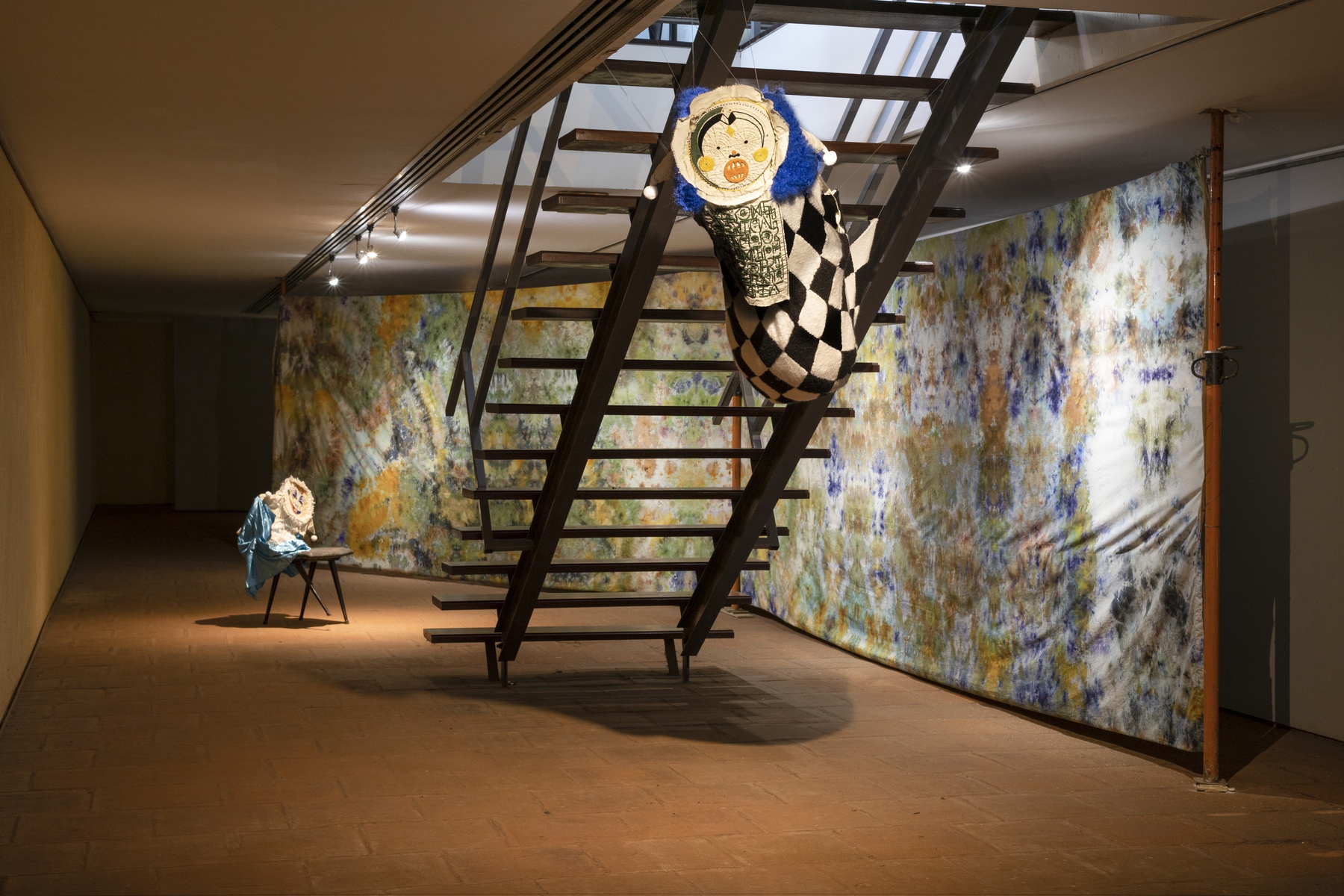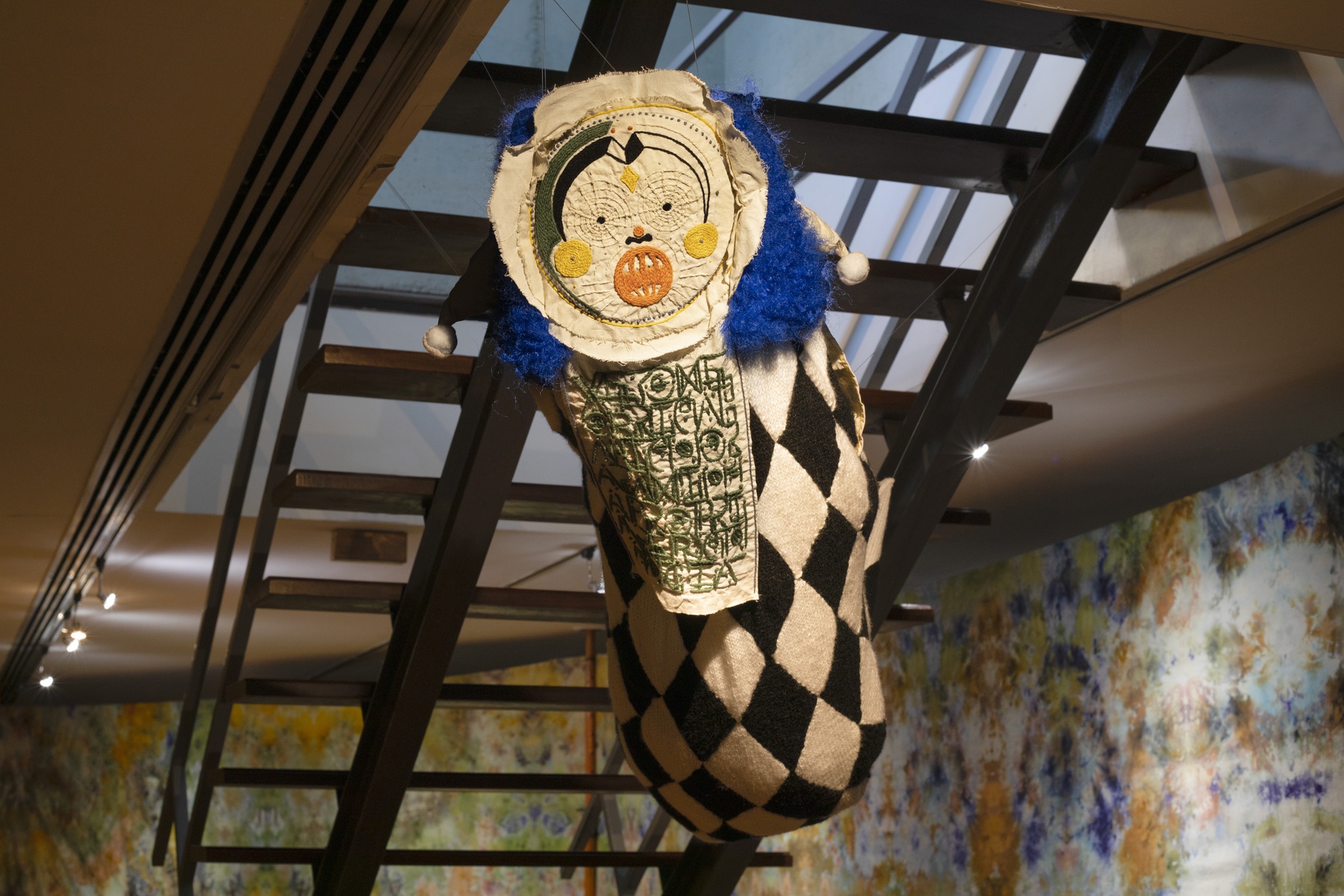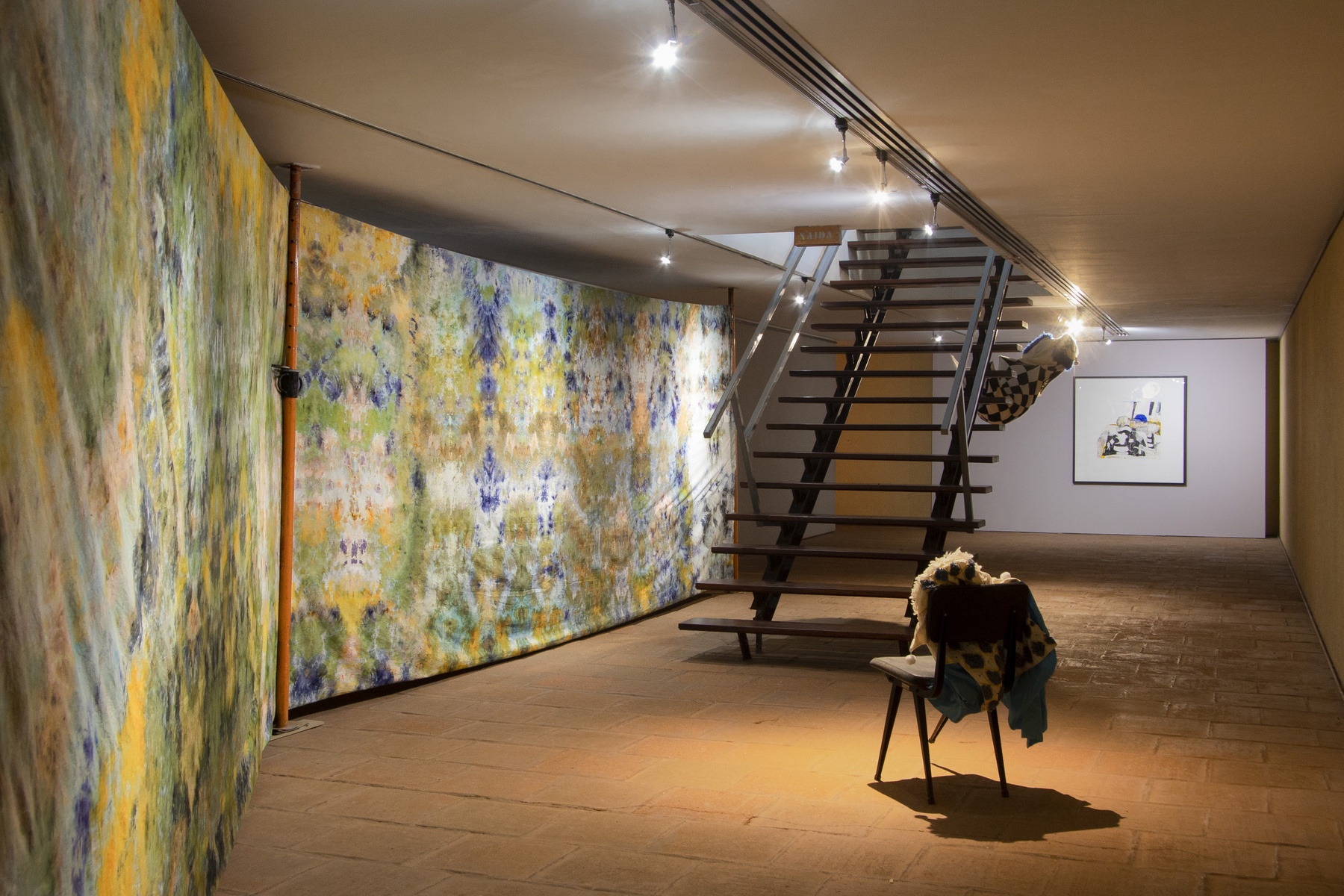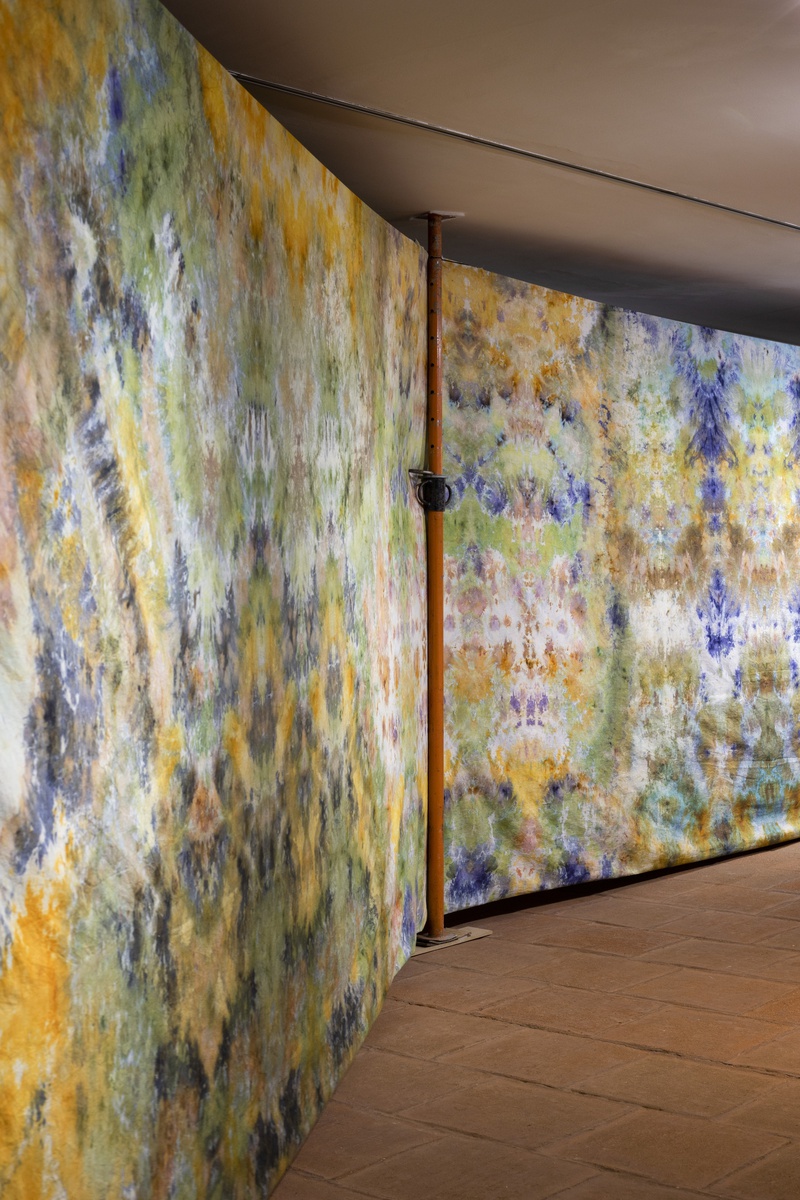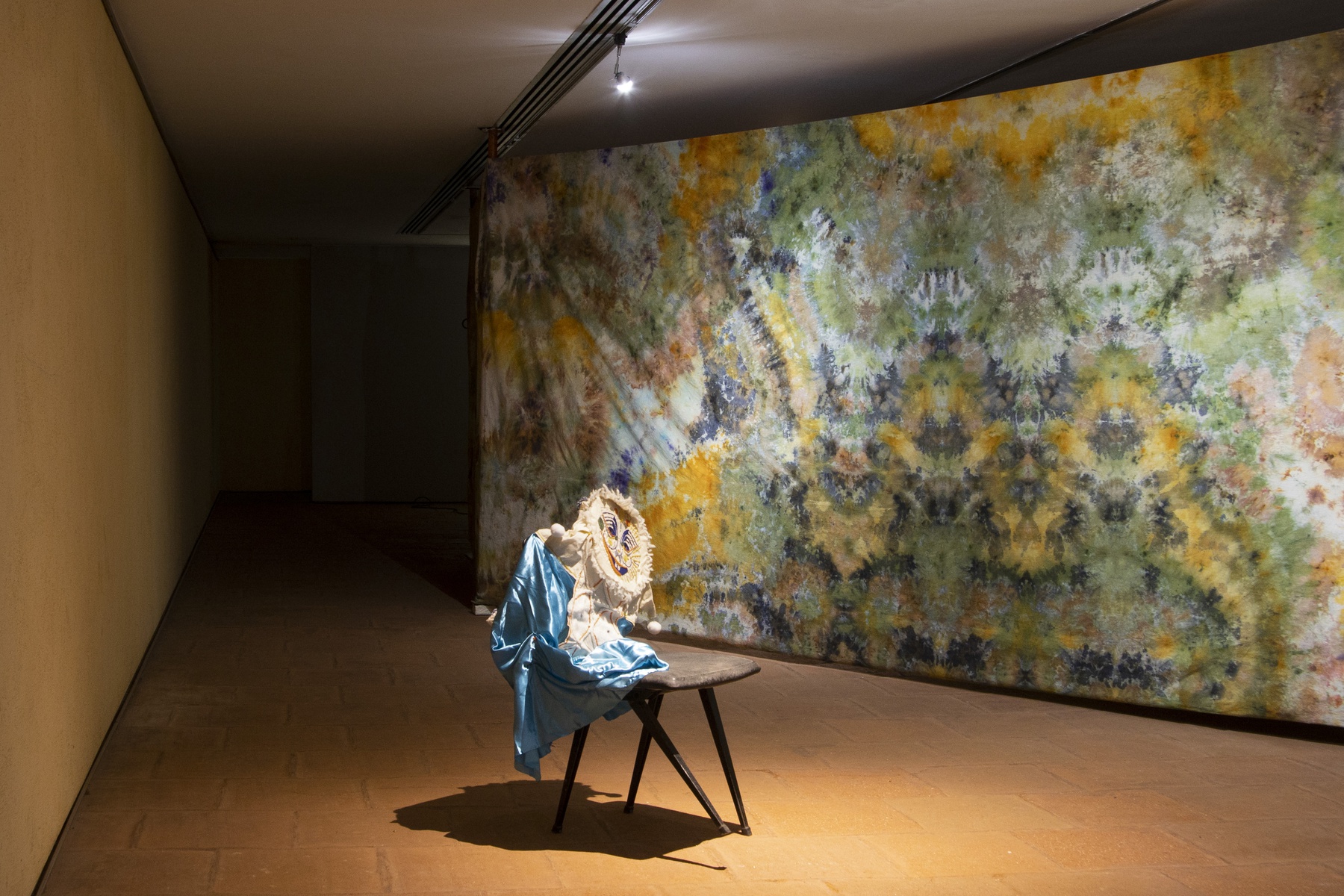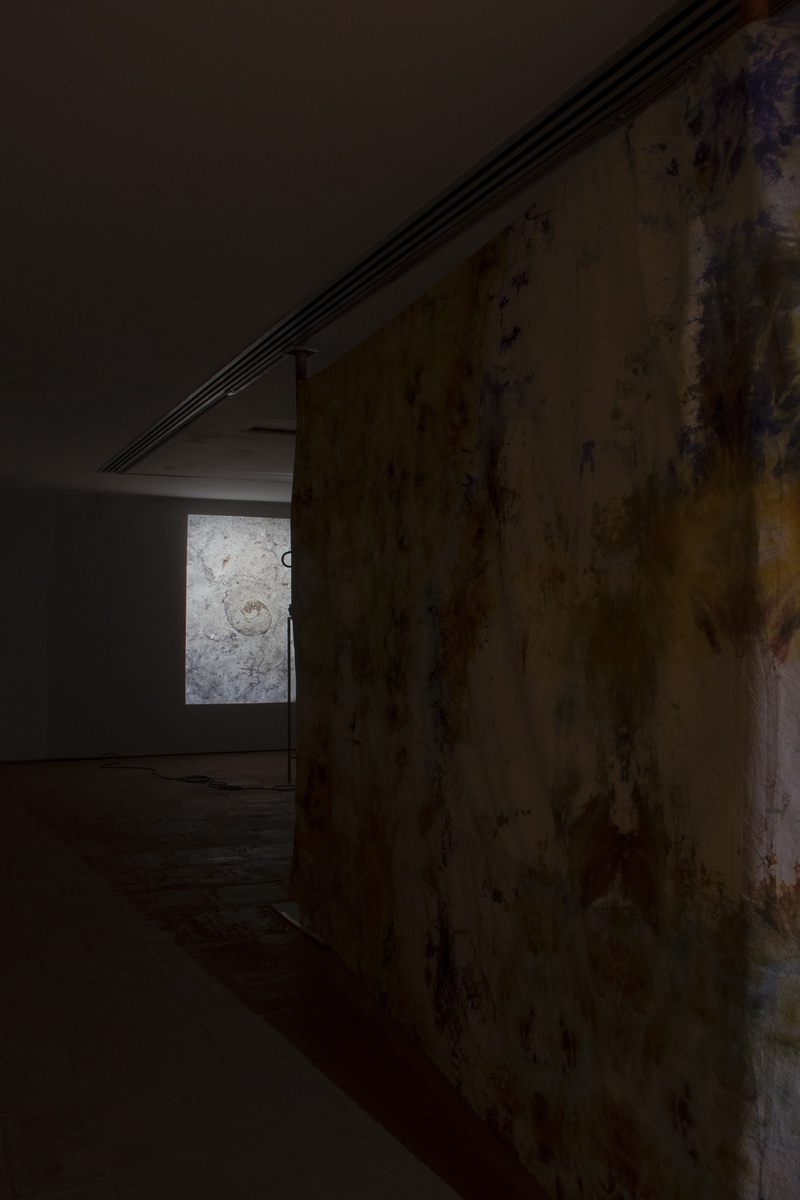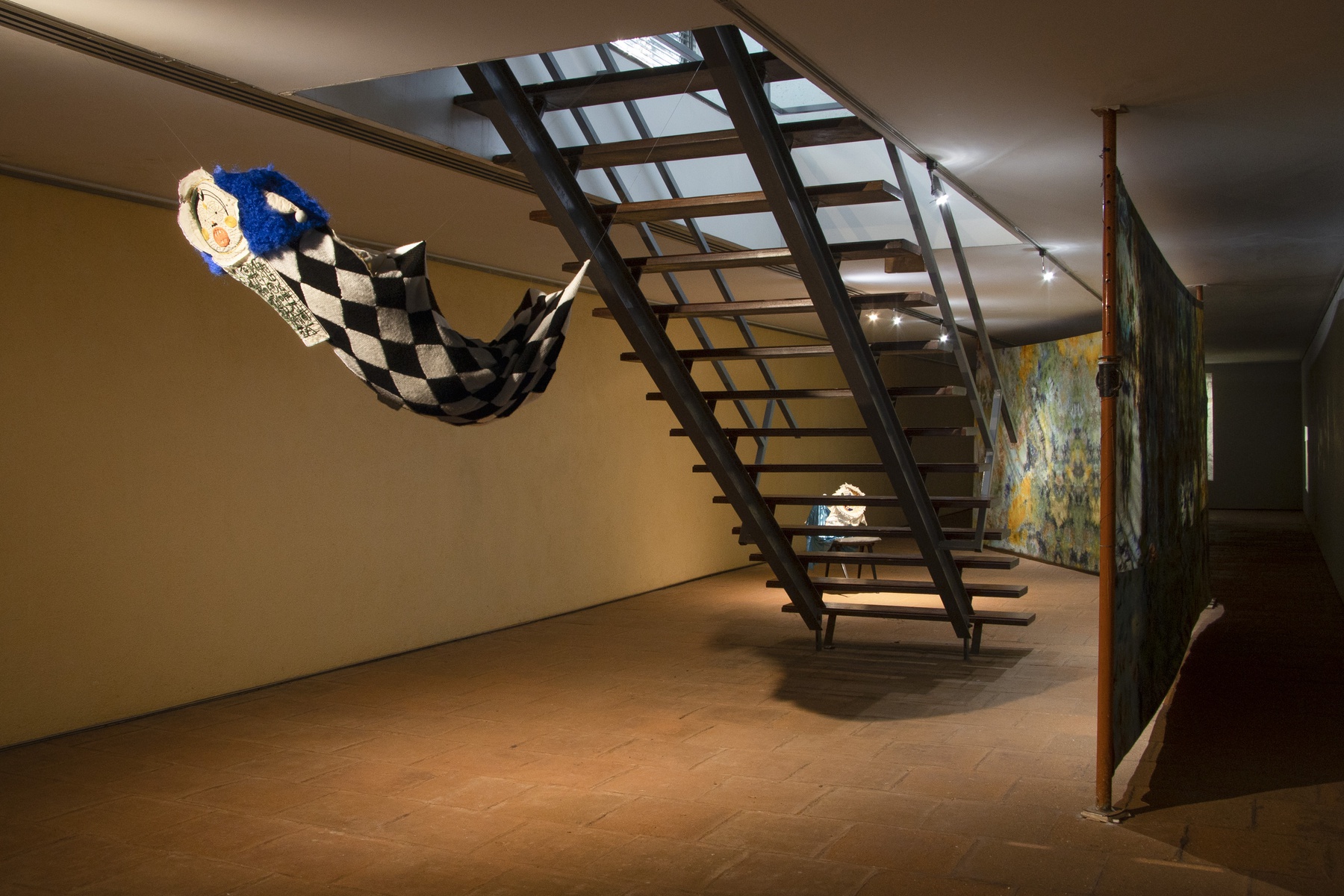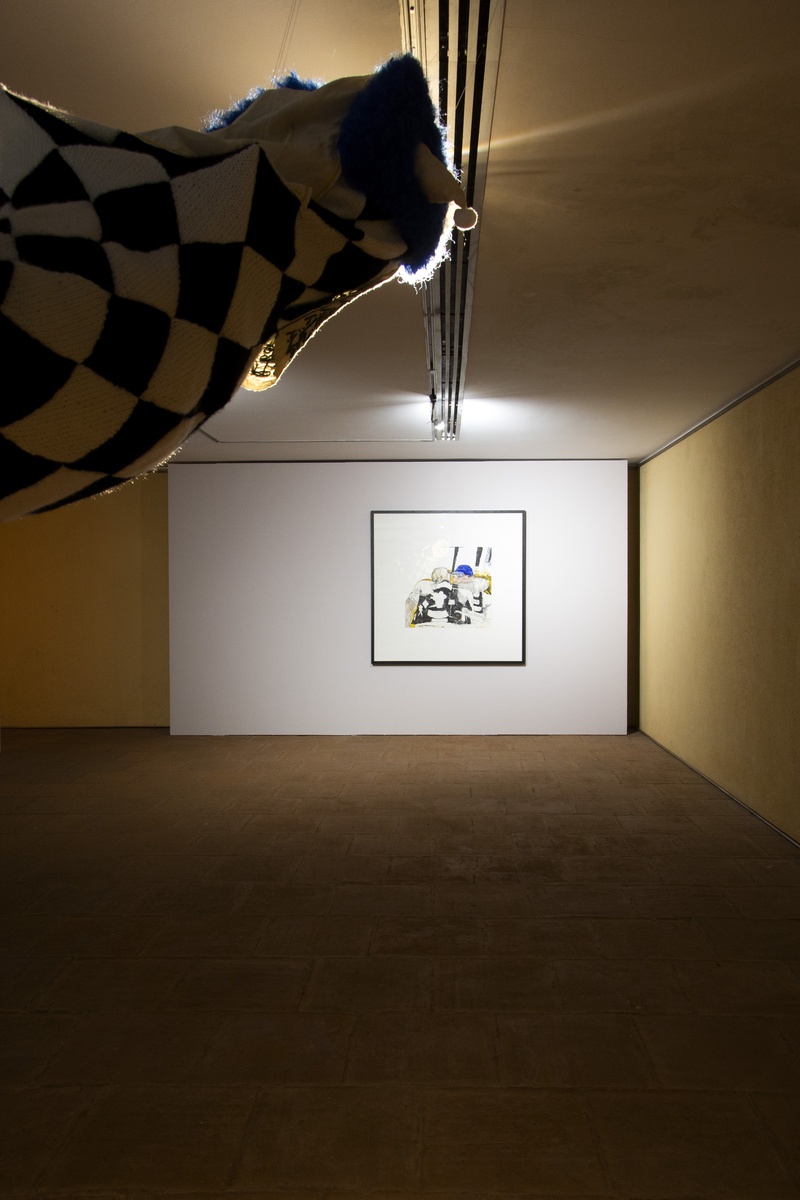Curated by Pedro Huet
Anna Szaflarski & Remko van der Auwera,
João Gil,
Rita Caldo,
Rudi Brito
Exhibition, Outside
6 Nov – 31 Dec 2021
@ Casa das Artes
Rua Ruben A, 210. Porto
view on map
Tuesday to Friday
10:00–12:30 / 14:30–18:30
Saturday 14:30–21:00
Sunday and Monday 14:30–18:30
Free admittance
Anna Szaflarski & Remko van der Auwera, João Gil, Rita Caldo, Rudi Brito
An exhibition that is a city. A city that has no name, that defines itself, for now, by what distinguishes it: the sun, the older one, the sheep, the origin (on and on) and klecks klecks. It is in the opposite way to the orientation of the title (which is not a title) that we can, also, start walking. A city is invariably defined by the structures that surround it and that distinguish the space that belongs to all of us from that which belongs only to a few. Lucky for us, no wall here belongs to us, and all the interior space is given to us to spin around. Still, other walls impose themselves, defining orientations, creating blind spots, sheltering us, and exposing us to everything that one can, in theory, discover on an urban stroll.
⌢ knew that, since the beginning, from time to time, the spots hit him. He was fascinated by the figurative dimension he could imprint on them – in the sky or in the water, in coffee or wine, on the walls or on the floor. ⌢ was also sure that this was something shared by other times and places. The dimension of the spot as a place of fascination and confrontation, both in the same proportion – that of chance. In this condition, he was hunting the personal demons that tormented his thoughts, in search of a way to give them a form. It was also this logic that led Justinus Kerner, in 1857, to publish Klecksographien, a collection of his Klecks and poems around the theme of death. These drawings by Kerner referred precisely to representations of skeletons, skulls, demons – images from the underworld, from the other side. Klecks Klecks, by Anna Szaflarski and Remko van der Auwera, precisely uses these spot-drawings by Kerner as the starting point for an installation that takes us on this trip through this undefined city. ⌢ knew this, but he also knew that, immersed in the patterns created by these figures, he would see more figures and that, within these, more shapes would appear, in a kaleidoscopic dimension that could make him lose himself inside this wall. Suddenly ⌢ found ↩︎ that diverted his attention to the origin of other spots, embedded in the wall, reflecting the times that have passed, the formations that have taken place, and the use given to them.
↩︎ spoke of the spots of these architectures comparing them to people's shadows. Inseparable, she said. Camouflaged by the different shades of all the surfaces, these spots became just that, spots. But they were not merely spots. Like the shadows that accompany us on walks through the streets, these forms are the marks of so many times inscribed on such a small piece of surface. Just as the blurs in Klecks Klecks tell us stories, here, unlike in Klecks Klecks, these stories will be more about a past we have not experienced and less about a demon we have idealized. A kind of origin that approaches and retreats, that meets and diverges, as João Gil is keen to point out. The state of ⌢ had completely changed since the arrival of ↩︎. He was experiencing a completely different journey. They traveled from this moment to other moments. Moments beyond the shadows, beyond their first representations. The ammonites made the representation something else, a chance like the previous blurs, but, still, an unplanned representation, an image-traveling to a past so far away that we can't imagine. This process of millions and millions of years had ended up brutally cut in half, or more than half, after being extracted from the ground. The origin (on and on) carried another notion of the time of these images. The process identify > shoot > develop > project > observe called to mind the apparatus of the first images they saw projected, reminded them of how in this circle they always reappeared, reinventing themselves. Long after they had met, so long that the sun had appeared, ⌢ and ↩︎ ︎, embraced by the paths they had traveled so far, stopped.
Observed in the background, on a higher plane, by a foreign body, ⌢ and ↩︎ had their first sense of verticality since they had met. Up until then, they had taken horizontal paths, in crossings through chronologies of time, or levitated through the fascination of the startled demons and images they carry. In this basement-city, they had not yet realized the inherent verticality of the place where they were. The feeling that they were being watched led them to consider looking around them in a 360-degree rotating movement. As they turned around, they realized what this body was that had been watching them since they had arrived there. Small points, primitive pixels that all together formed lines, which in turn formed shapes, and that did not restrain themselves from removing all noise from their face, in order to leave visible only the information strictly necessary for themselves and their relationship with others. This editing work took a long time, and each of these points was also a measure of that time. One could already tell that this encounter was the oldest they had ever had with anyone all the way through. Bizarre feeling that of being watched. Now that they approached him, the malleable body loomed over them, petrified up there. After a dance on the edges, it landed in that little piece of familiar space. All these points, which ⌢ and ︎↩︎ had already traveled, and which were now there, on the face of the older one that Rita Caldo had brought to this party. What a trip!!!
– But is he flying? – ︎asked ↩︎ to ⌢.
⌢ who had no answers, thought the older one could only be a ghost, an image of those demons or disquiets. A turning from the interior to the exterior. Petrified by such an apparition, the old women of Kharms came to both their minds. However, unlike the overly curious old women of Kharms, this one did not fall.
– But why? How come he doesn't fall? – ↩︎ continued to wonder. – The old women, all of them, were falling. One after the other, and they only stopped falling after Kharms left...
⌢ who still had no answers, thought of the other old woman. The one who always appeared in his room even if dead... but they both decided to twist themselves once more and looked at the sun again. They left the older behind, yet they still would meet later. The sun. Even in this underground city, the sun had arrived, and it didn't just appear. It marked a horizon in the background, positioning them in a kind of viewpoint where they could observe it. This omnipresent sun gave them the possibility to observe an embrace. They, who had just embraced.
This sun they were looking at left this image engraved in their eyes like when we look at a light source and get a retained shape. It had this clipping of a form, as several of Rudi Brito's paintings have, bordered by the characters and not by a straight line, but it was re-framed into a square, re-re-framed into another square, re-re-re-framed into a rectangle. Like a point of light that appeared between all these demarcating lines. The sun had escaped from the horizon and left here only the forms it had illuminated. Those that a gaze retains and replicates. The contrasts were striking and the image that remained was ambiguous. They could be so many kinds of embraces. But what embrace would this be that ↩︎ and ⌢ found as they turned toward the sun? After a while, they realized that the older one also seemed to be looking at this embrace. Was he thus upon them or upon the embrace? Was this embrace the solution to all the ghosts they had walked through so far? Was it the grand finale? The brushstrokes that built it were like blurs that built shapes, more defined than the previous blurs, more contrasting than the observed fossils, but still ambiguous in the blurring they caused in both. And just when they thought their little trip was coming to an end, ⌢ and ↩︎, hear, from behind, a voice.
☋ was overjoyed to have found both at once. In apotheosis with what she had seen, she told them about the sheep, a companion of the older one, and that she had filled herself with strength and walked all over the city on November 6, leaving her skin on a chair at the gates of the maze and gone about her life with another outfit, calmly climbing the stairs back to the level that led to the entrance of all the other buildings.
Pedro Huet
Biographies
Rudi Brito(Lisbon 1988) graduated in fine arts in Caldas da Rainha. He moved to Glasgow, where he deepened his interest in the performing arts and exhibited his work in venues such as the CCA (Centre for Contemporary Arts), Glue Factory, and Cafe Oto. Recently, it took root in Lisbon, where it has shown a strong proliferation, having, in a short period, completed a residency at Thirdbase, started a curatorial collective ('Purga', in collaboration with Isabel Cordovil), and participated in the sound exhibition entitled ' Audiosphere' at the Reina Sofia Museum, Madrid.
Rita Caldo was born in January 1998 in Porto. She grew between Zebreiros, Wife, and Baixa. She lately clings to the idea of the production's innate need to explore its themes, and the deliberate choice of a concrete subject seems to her, quite honestly, pointless. Even so, certain themes emerge without invitation, imposing themselves. Narrative, Space, and Figure. Spontaneous narratives she hasn't deciphered yet. Just appear. And they ask for relevance. Space created and changed. Relevant space rather than ignored. Space for gesture too. And Figure. Figure as a basis for the rest. As an embodiment of the other concepts, which depend on it. Mime, mime creates space through mime, through gesture. She is part of the Celestial Collective, whose atelier cannot be found on this plane of existence but is reserved for confined sisters. She makes soup in response to unexpected longings, to feed the hurt.
João Gil(Lisbon, 1989) is an artist and researcher currently based in Lisbon, Portugal. Attended Fine-arts at Lisbon’s Academy of Fine Arts from 2008 to 2010, eventually moving to Caldas da Rainha, having graduated from his BA in Industrial Design in 2013 from ESAD. In 2014, Joao moves to London to pursue an MA in Industrial Design at Central Saint Martins, UAL which he graduated in 2016.
His practice often revolves around a site, both physical and conceptual; From this, he’s particularly interested in deconstructing socio-cultural, political and technological agents, towards a post-anthropocentric perspective of place, time, and history. This practice is deeply rooted on a quasi-archeological investigation, with recurring site visits, documentations and consultation of archive materials, weaving sensorial narratives, often ambiguous and fragmented.
Anna M. Szaflarski (based in Berlin, Germany, *1984, Canada) works in sculpture, drawing, installation and book work. Her work intertwines autobiographical and historical narratives, exploring such topics as the social anxieties of sharing space, the feminist politics of bodily boundaries, domestic violence, and the dynamics of hierarchical power structures. Her recent projects have included exhibitions at the Klosterruine Berlin, Kunstverein Göttingen, Reutlingen Kunstverein, Vernacular Institute (Mexico City), and Ashley Berlin. Recent publications include Very Normal People (2019) and Letters to the Editors (2016), co-published by AKV Berlin and Bom Dia Boa Tarde Boa Noite Verlag.
Remko Van der Auwera, living and working in Berlin is a multidisciplinary artist, working with installations and digital media. He explores and navigates the contemporary art field, often by means of collaboration and is a founding member of SoilCollective, a four headed curatorial and artist collective based in Brussels. Recent projects include ‘Wood and clay will wash away’ (SOX, Berlin, DE) and ‘These Transient Joys Will Fade All Too Soon’ (Flagge Zeigen, open-air exhibition, Berlin, DE).
Support
Exhibition, Outside
6 Nov – 31 Dec 2021
@ Casa das Artes
Rua Ruben A, 210. Porto
view on map
Tuesday to Friday
10:00–12:30 / 14:30–18:30
Saturday 14:30–21:00
Sunday and Monday 14:30–18:30
Free admittance

